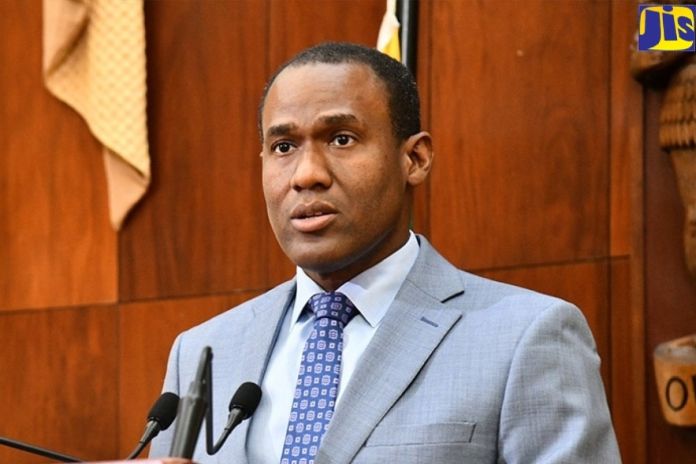By Lisa Rowe
KINGSTON, Jamaica, (JIS) – Minister of Finance and the Public Service, Nigel Clarke, on Monday, July 8, 2024 announced that Jamaica’s Tropical Cyclone Policy with the Caribbean Catastrophe Risk Insurance Facility (CCRIF) has triggered a payment following the passage of Hurricane Beryl.
Dr Clarke said the government received a Preliminary Modelled Loss and Policy Payment Report from the CCRIF, which stated that a payment of approximately US$16.3 million or J$2.5 billion would be made.
This policy represents the fourth level in the government’s multilayered disaster risk financing framework. The administration has strategically put in place a multilayered set of financial instruments to pre-finance the emergency response to and recovery costs of natural disasters.
Dr Clarke has indicated that while it is neither expected nor designed that all storms will trigger all instruments, the idea is that Jamaica should always be able to access resources from some instruments for every severe weather event.
On July 5, he advised that the government initiated the process to access funds under a Contingent Credit Claim with the Inter-American Development Bank (IDB).
The administration also has a $140-billion Precautionary and Liquidity Line (PLL) with the International Monetary Fund.
The PLL is intended for countries with strong fundamentals and can be drawn down in the event of liquidity challenges emerging from natural disasters or economic shocks.
The minister pointed out, however, that “at the current time, this facility is unlikely to be drawn [by the government]”. Dr Clarke is expected to provide further updates on the status of additional disaster risk financing that is available in the coming weeks.
In 2023, the government facilitated public consultations on the National Natural Disaster Risk Financing Policy (NNDRFP). The policy is intended to assist in improving Jamaica’s resilience in handling the aftermath of disasters and adequately planning and preparing, financially, for these events.
It zeroes in on pre- and post-disaster measures, and focuses primarily on planning for and ensuring adequate financial capacity to address fallouts. This is expected to enhance the government’s responsiveness to the outcomes of disasters without putting a strain on the Consolidated Fund.
The policy’s ultimate goal is to minimise the fiscal impact on the national budget.





